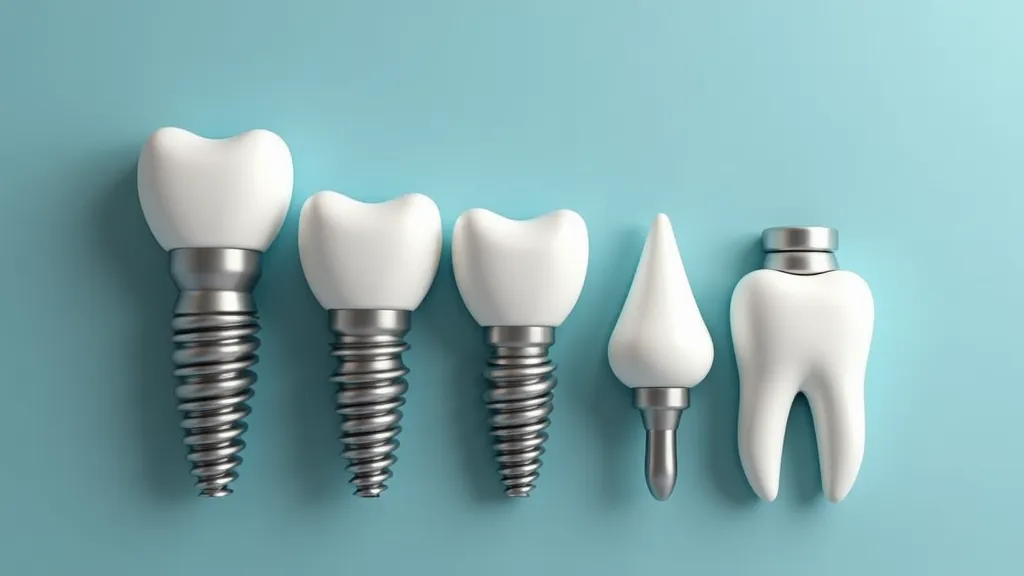A detailed exploration of good dental implants, including costs, benefits, and where to find affordable options.

Dental implants have become a revolutionary solution for individuals facing tooth loss. They provide a good and aesthetically pleasing alternative to traditional dentures and bridges. The process involves the surgical placement of titanium posts into the jawbone, which act as artificial roots for replacement teeth. This article will delve into the benefits of dental implants, the costs associated with good dental implants, and resources available for patients seeking affordable options.
Good dental implants offer numerous advantages compared to other tooth replacement options:
The cost of dental implants can vary widely based on several factors, including the type of implant, the complexity of the procedure, and location. Below is a detailed breakdown of the cost ranges for dental implants in various countries:
| Country | Currency | Price Range |
|---|---|---|
| United States | USD | $3,000 - $6,000 |
| United Kingdom | GBP | £2,000 - £2,500 |
| Australia | AUD | AU$3,500 - AU$6,500 |
| Canada | CAD | CA$3,000 - CA$5,500 |
| Spain | EUR | €1,500 - €2,500 |
| Chile | CLP | CLP$800,000 - CLP$1,500,000 |
| Mexico | MXN | $15,000 - $25,000 |
| Colombia | COP | $2,000,000 - $4,000,000 |
| Peru | PEN | S/ 3,000 - S/ 6,000 |
| Argentina | ARS | $80,000 - $150,000 |
| Brazil | BRL | R$3,000 - R$8,000 |
| Portugal | EUR | €1,000 - €2,000 |
For individuals seeking low-cost dental implants, various resources are available across different regions. Below is a comparative overview of dental clinics and organizations that provide information on affordable dental implants:
| Provider | Focus |
|---|---|
| Dental Views | Low-cost dental implant solutions and detailed treatment information |
| Atlantic Dental Group | Comprehensive dental services including implants and emergency care |
| DentaVacation | Dental tourism options for affordable treatments abroad |
| ADHP | Dental insurance plans to help cover treatment costs |
Source: Dental Views, Atlantic Dental Group, DentaVacation, ADHP.
Obtaining affordable dental implants involves several steps:
The dental implant procedure can be broken down into several stages, each crucial for the successful integration of the implant:
The first step involves a thorough examination of your mouth, teeth, and jawbone. X-rays or 3D imaging may be taken to assess bone density and structure. During this phase, your dentist will discuss your medical history and any existing conditions that may affect the procedure.
Once you are deemed a suitable candidate, the first surgical step involves placing the titanium implant into the jawbone. This procedure is typically performed under local anesthesia, ensuring you remain comfortable throughout. The dentist will make a small incision in the gum to expose the bone and then drill a hole into the bone where the implant will be placed. After placement, the gum tissue is stitched back over the implant.
Following the implant placement, a healing period known as osseointegration occurs. This is when the bone grows around the implant, anchoring it securely in place. This phase can take several months but is crucial for the long-term success of the implant.
Once osseointegration is complete, a second minor surgery is performed to place an abutment, which is a small connector post that will hold the crown. The gum tissue is reopened to expose the implant, and the abutment is attached. After this, the gums will need to heal around the abutment for a few weeks.
Finally, after healing, a custom-made crown is created to match your natural teeth. This crown is attached to the abutment, completing the procedure. Your dentist will ensure that the crown fits properly and looks aesthetically pleasing.
Like any surgical procedure, dental implants come with certain risks and potential complications. Understanding these risks can help patients make informed decisions:
Good dental implants represent a valuable investment in oral health and quality of life. With various options available for affordable dental care, patients can find solutions that meet their financial and aesthetic needs. By conducting thorough research and considering all available resources, individuals can navigate the process of obtaining dental implants while minimizing costs. Additionally, understanding the entire implant procedure and potential risks empowers patients to make informed choices, ensuring the best possible outcomes for their dental health.
Disclaimer: The above information comes from online resources, and the data is as of October 2023. Dental implant prices are for reference only and may vary by region, clinic, and doctor.
References:
Understanding Sme Neobank Impact

Exploring Webbank and Its Competitors

Discover Westminster Plaza Orlando

Discover Heartis Eagle Mountain Elegance

Westminster Plaza Orlando: A Comprehensive Guide

Transforming Banking with Sme Neobank

Discovering Westminster Plaza Orlando

Discovering Westminster Plaza Orlando

Life Insurance for Seniors: Maximizing Coverage and Benefits
